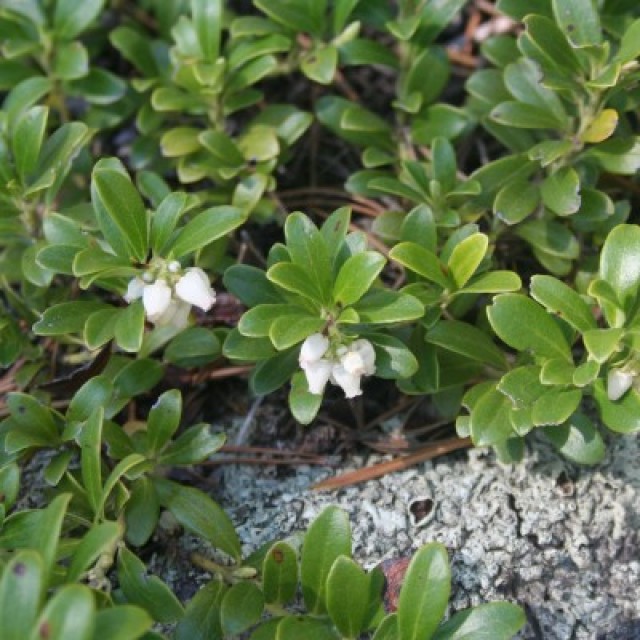COMMON NAME
bearberry
SCIENTIFIC NAME
Arctostaphylos uva-ursi
ALSO KNOWN AS
Bearberry
Plant family
Heath (Ericaceae)
Plant group
Broadleaf Evergreens
Kinnikinnick is one of the few woody shrubs in the heath family with large, thick evergreen leaves that trails along the ground. It has urn-shaped whitish or pinkish flowers with openings on the bottom.
98 reports
37+
OBSERVERS
98+
OBSERVATIONS
Identification hints
Kinnikinnick is one of the few woody shrubs in the heath family with large, thick evergreen leaves that trails along the ground. It has urn-shaped whitish or pinkish flowers with openings on the bottom and small red berry-like fruits.
Did you know?
Kinnikinnick serves a dual role on sandy soils, as both a beautification plant as well as a critical area stabilizer. The thick, prostrate, vegetative mat and evergreen character are what make bearberry a very popular ground cover. It is often planted around home sites, sand dunes, sandy banks, and commercial sites. Contributed by USDA NRCS Northeast Plant Materials Program.
DISTRIBUTION IN TH U.S.
Alaska
,
Arizona
,
California
,
Colorado
,
Connecticut
,
Delaware
,
Iowa
,
Idaho
,
Illinois
,
Indiana
,
Massachusetts
,
Maine
,
Michigan
,
Minnesota
,
Montana
,
North Dakota
,
New Hampshire
,
New Jersey
,
New Mexico
,
Nevada
,
New York
,
Ohio
,
Oregon
,
Pennsylvania
,
Rhode Island
,
South Dakota
,
Utah
,
Virginia
,
Vermont
,
Washington
,
Wisconsin
,
Wyoming
HABITAT
Very cold tolerant, preferring coarse, well-drained soils of forests, sand dunes, bald or barren areas. Kinnikinnick is found throughout much of the United States, into Canada and reaching Alaska. It can be found at a variety of elevations.
ATTRIBUTES
Leaves
Leathery, dark green leaves have rounded tips and are 1 in (2.5 cm) long, held vertically by a twisted leaf stalk. The leaves turn to a red-green or purple color in the fall.
Flowers
Small, white to pink urn-shaped flowers occurring in clusters. The flowers bloom in late spring (May to June) depending on the location.
Fruits
Kinnikinnick produces small berries (called drupes) that turn red when ripe. The berries are eaten by small mammals and some songbirds. Kinnikinnick fruits need to be cold stratified in order to germinate.
See Menu
Budburst is a project of the
Chicago Botanic Garden
One of the treasures of the
Forest Preserves of Cook County
Creative Commons
BY-NC-SA 4.0
- 2021 Chicago Botanic Garden. All Rights Reserved.
- Terms of Use
- Privacy Policy
- Data Sharing and Citation Policies
- 2021 Chicago Botanic Garden. All Rights Reserved.



